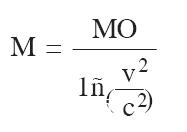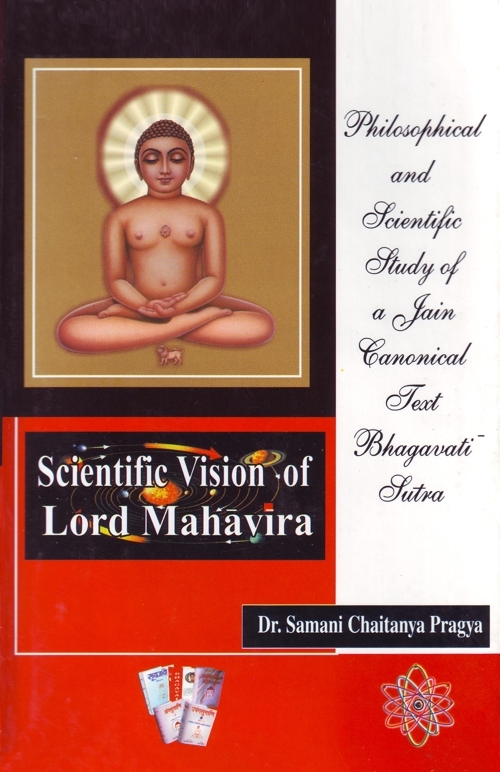Mutation (Pariṇāma) and motion (kriyā) are not different but two facets of the dynamic nature of physical object. The latter differs from the former in a subtle way, because it involves movement of some kind or other.[97] Actually, both are manifestations of dynamism and therefore as earlier pointed out, gati i.e. motion has been enumerated as one of the ten Parinamas. However, motion in which kriya is involved is gross as well as subtle, while mutation involves various kinds of motions which explain Pudgala as being incessantly active.
According to the Bh.S and other works, Pudgala and conscious are active (kriyāvan) substances.[98] It means that out of the six substances, the medium of motion, the medium of rest and space are completely devoid of any kind of motion. In fact, soul is dynamic only due to its association with karma particles and its interaction with matter and not by itself. It becomes clear when a living being attains emancipation, its association with physical order of existence comes to an end once for all. In its pure state, conscious becomes motionless.
In this way only Pudgala is dynamic. Motion is its inherent attribute. But it does not mean that the entire physical existence is active everywhere and at all times and under all conditions. The Bh.S while describing atomic structure indicates that a physical body is sometimes in motion and sometimes at rest.[99] According to the text, Pudgala remains at rest at a single point for sometime before moving. In short, the dynamic state of it is not continuous, but there are periods of intermittent rest.[100]
Vibratory motion is one type of dynamic activity, being an inherent attribute of Pudgala.[101] In other words, it releases or absorbs energy because of its own competence to vibrate and is, thus, dynamic in its own right.[102]
There are many types of activities (kriyā) and primarily each activity is different from the other. As we know, transformation of energy of any type is kriya. The nature of kriyā exerts pressure and produces energy. So, different types of energy manifestations can be grouped together on different bases. On the basis of causality, there are two types of kriyā:[103]
- Spontaneous: i.e. natural. The spontaneous release of energy is caused by its own innate capacity.
- Activated: i.e. by effort. External forces cause the action.
In another way, kriyā is of two types: [1] motion and [2] fusion - fission.
Again the motion may be vibratory or migratory.
Vibrations are again of two types: [1] simple and [2] complex.
The migratory motions are of two types: [1] without changing direction i.e. in a straight line. [2] With change of direction.[104]
In the Bh.S, a few examples of different kinds of motions are given.[105]
Thus, motion may be spontaneous or caused by outside forces. It is not an eternal quality of a substance that is why matter is sometimes in motion and sometimes at rest. It sometimes vibrates, and also rotates and so on until it changes its mode. The word 'so on' here indicates that along with simple and complex vibrations, there are many other types of motion but which are those is really a matter of research.
But according to modern scientists like Einstein, matter is essentially active, dynamic and not the least static.[106] The universe was subjected to the regorus scientific explanations that formulated the laws of mechanics. The scientists found that motion of matter gave rise to the concepts of forces, pressures and tensions that are of the nature of gravitation and Electromagnetism. The shape and size of any body comprises elastic forces and particles of matter. The whole matter is composed of electrical particles.
To explain the mechanics of dynamic material universe, one requires the following condition—distance in space, time and mass. An elaboration is necessary here—space and time are not ambiguous and mass means not mere heaviness but property of matter or resistance to a change of state. In classical physics, the mass of any body is fixed and unchanging property. But Einstien[107] established the relativity of mass. He asserted that the mass of a moving body increases with its velocity according to the following equation:

Here, MO is the mass of a body at rest, M is its mass when moving, V is the velocity of the body and C is the velocity of light.
The sum total of the arguments advanced by scientists is that matter and energy are not different elements. Matter is energy and energy is matter was explained in the previous pages. The dualism of matter and energy is not accepted by quantum theory.
Both matter and energy are the same as the Jain concepts of paryāya, Parinama and kriyā etc. These are the characteristics of all the material clusters and atoms. The energy of electromagnetic radiation and particles ejected from radioactive substances are but two different forms (paryāyas) of the same attribute, i.e. kriyāvattva.[108]
Now, we come to the conclusion that the process of fusion and fission that are the basic features of Pudgala are inevitable results when energy is released in its various forms.
 Dr. Samani Chaitanya Pragya
Dr. Samani Chaitanya Pragya

